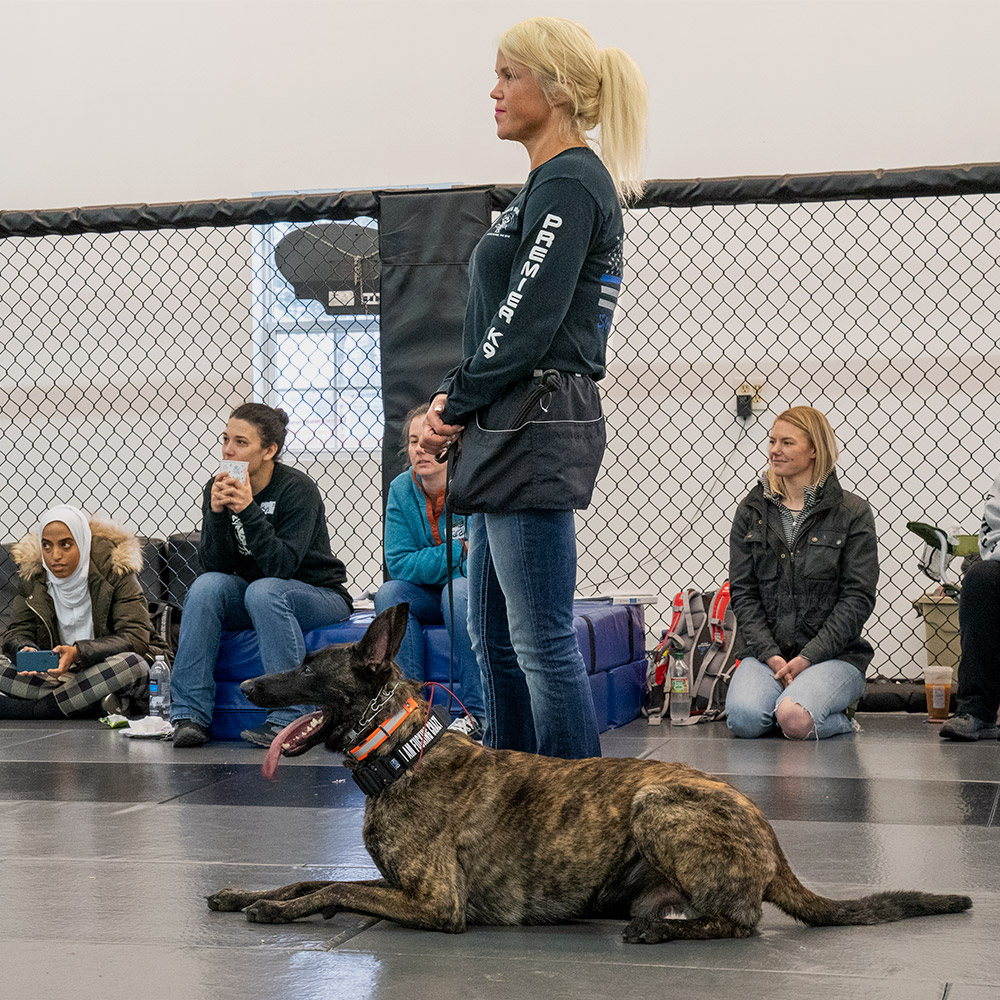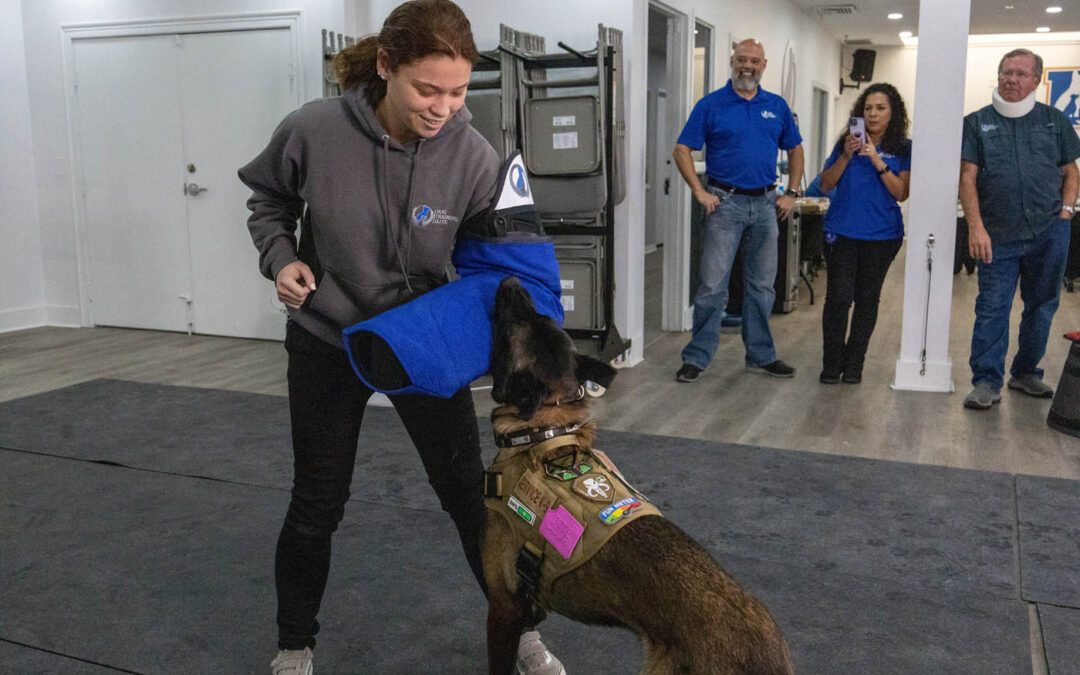Turning a passion for dogs into a thriving business sounds like a dream come true. I know the excitement of helping pups learn new tricks and watching their owners beam with pride. If you love working with dogs and want to make a real difference in your community, starting a dog training business could be the perfect next step.
I’ve seen firsthand how rewarding this path can be. With more people seeking positive ways to train their furry friends, there’s never been a better time to jump in. Whether you’re already a skilled trainer or just eager to learn, I’ll guide you through the essentials to get your business off the ground and set yourself up for success.
Understanding the Dog Training Industry

Understanding-the-Dog-Training-Industry
Dog training industry trends reveal strong growth driven by increased pet ownership and urbanization. I see a shift toward evidence-based, force-free training methods recommended by the American Veterinary Society of Animal Behavior. Technology also shapes industry offerings, with clients expecting digital booking and online resources for convenience.
Professional certifications authenticate my skills for clients searching for expertise. Recognized credentials include Certified Professional Dog Trainer-Knowledge Assessed (CPDT-KA) and Karen Pryor Academy Certified Training Partner. These standards strengthen client trust.
Competitive analysis is essential in my local market. I examine direct competitors offering obedience, behavior modification, and specialty classes, such as agility or service dog training. I identify market gaps, for example, off-leash training or in-home consultations, to differentiate my services.
Key target segments comprise new dog owners, families with children, and clients with reactive or anxious dogs. I tailor program offerings to address the specific needs of these client categories.
Dog Training Market Data
| Metric | Value | Source |
|---|---|---|
| Annual US Market Size | $820 million | IBISWorld 2023 |
| Annual Growth Rate | 3.6% (2018-2023) | IBISWorld 2023 |
| Percentage Using Trainers | 15% of US dog owners | APPA 2022 Pet Owners Survey |
| Most Demand Services | Obedience, puppy, behavior modification | APDT 2023 Survey |
Main Dog Training Service Types
| Service Type | Description |
|---|---|
| Obedience Training | Foundational commands, leash manners |
| Puppy Training | Socialization, early learning |
| Behavior Modification | Addressing fear, aggression, anxiety |
| Advanced/Specialty | Agility, therapy, service preparation |
Staying informed on dog training industry shifts, evolving best practices, and client preferences keeps my business relevant and competitive. I use these insights to design responsive, effective service offerings for growth.
Essential Skills and Qualifications for Dog Trainers

Essential-Skills-and-Qualifications-for-Dog-Trainers
Practical expertise anchors my success as a dog trainer. Foundational skills include deep knowledge of canine behavior, patience when working with different breeds, and clear communication with both dogs and their owners. I often develop these skills by volunteering at local animal shelters or apprenticing under certified trainers.
Certifications demonstrate my understanding of humane and science-based training. While legal requirements vary by region, holding credentials from nationally recognized organizations like the Certification Council for Professional Dog Trainers (CCPDT) or the International Association of Canine Professionals (IACP) increases client trust. I regularly update my training techniques through workshops and continuing education.
Strong qualifications don’t stop at handling animals. I build client relationships through reliable follow-up, detailed progress reports, and approachable guidance. Specialized training skills—such as therapy animal preparation or agility coaching—can distinguish my services in a competitive market.
Typical pathways for skill building, certification options, and experience types are shown in the tables below:
Pathways to Skill Development
| Method | Focus Area | Example Activities |
|---|---|---|
| Volunteering | Canine behavior observation | Animal shelters, rescue groups |
| Mentorship/Apprenticeship | Advanced handling techniques | Shadowing certified trainers |
| Formal Education | Training science and theory | Online courses, community college classes |
Dog Training Certifications
| Certification Provider | Certificate Name | Typical Requirements |
|---|---|---|
| Certification Council for Professional Dog Trainers (CCPDT) | CPDT-KA, CPDT-KSA | Exam, logged training hours |
| International Association of Canine Professionals (IACP) | IACP Certified Dog Trainer | Coursework, mentorship |
| Karen Pryor Academy | KPA Certified Training Partner | Formal instruction, testing |
Essential Personal Skills
| Skill | Contextual Example |
|---|---|
| Patience | Teaching high-energy or fearful puppies |
| Communication | Explaining protocols to nervous owners |
| Adaptability | Adjusting methods for reactive dogs |
| Reliability | Consistent session scheduling, follow-up |
Continuous learning, professional certification, and practical engagement with clients and dogs define my effectiveness as a dog trainer. These strengths align with rising client expectations and maintain my service quality.
Creating a Dog Training Business Plan
A comprehensive plan builds a durable foundation for my dog training business. Every section—services, target market, and pricing—aligns with local demand and clear growth objectives.
Defining Your Services
Clearly defining my dog training offerings targets engagement and profit. Specialized services—like behavior modification, agility, or puppy programs—attract clients who seek expertise and help set me apart. Ancillary options, such as group classes, dog walking, or pet sitting, create additional revenue streams. My plan for each service details training methods, session formats, and required certifications.
Example Dog Training Services Table:
| Service Type | Description | Potential Clients |
|---|---|---|
| Obedience Training | Basic commands, leash manners | New dog owners, families |
| Behavior Modification | Address aggression, anxiety | Owners of reactive or anxious dogs |
| Puppy Socialization | Early training, positive habits | Puppies aged 8-20 weeks |
| Agility/Specialized | Advanced skills, competition prep | Sport/motivated dog owners |
| In-Home Consultation | Personalized, at-home training | Busy households |
| Ancillary Pet Services | Dog walking, pet sitting | Working professionals |
Identifying Your Target Market
Accurately identifying my target market refines my marketing and service approach. Market research evaluates local demographics—like household income, pet ownership rates, and community dog culture. Geographical areas with high concentrations of new pet owners, families, or retirees often signal opportunity. I assess competitors’ client bases to identify underserved niches.
Sample Target Market Factors Table:
| Market Factor | Example Metric | Application |
|---|---|---|
| Household Income | Median: $75,000 | Affordability analysis |
| Ownership Rate | 55% of households own dogs | Market size estimate |
| Local Gaps | No off-leash trainers | Niche opportunity |
Setting Pricing Strategies
Effective pricing strategies balance competitiveness and profitability for my dog training business. I research market rates for similar services, factoring in business expenses like insurance, facility rent, and equipment. Value-based pricing—charging premium rates for specialized or complex training—attracts clients looking for expertise. My structure supports growth while ensuring positive margins for every service.
| Service | Local Average Price | My Target Price | Rationale |
|---|---|---|---|
| Private Obedience Lesson | $75/session | $80/session | Extra certification, 1:1 focus |
| Group Puppy Class | $120/6 weeks | $115/6 weeks | Introductory offer |
| Behavior Modification | $100/session | $120/session | Advanced techniques |
| Agility/Competitive | $30/class | $35/class | Specialty equipment |
Legal and Financial Considerations
Legal and financial planning creates a secure foundation for any dog training business. Each step—from registration to budgeting—directly impacts my risk, reputation, and profits.
Business Registration and Licensing
Registering my dog training business establishes legal compliance and brand protection. I select a legal structure such as a sole proprietorship or LLC, which shapes my liability and taxes. Local authorities issue business licenses; requirements depend on city and county jurisdictions. For example, Los Angeles mandates a standard business license and may require specialty pet-related permits. Selling retail items like leashes or treats adds the need for a sales tax permit.
Common Registration and Licensing Requirements
| Requirement | Description | Example Jurisdiction |
|---|---|---|
| Business Registration | Legal entity setup (LLC, Sole Proprietor) | All US states and territories |
| General Business License | Permit to operate locally | New York, Los Angeles |
| Specialty Dog Training License | Special permit for trainers, where required | Denver, Houston |
| Sales Tax Permit | Needed for retail product sales | California, Texas |
Insurance and Liability
Securing insurance protects my business from claims or lawsuits involving dogs or clients. Liability insurance is recommended by authorities like the American Kennel Club because it covers injuries and property damage during training activities. This insurance builds trust with clients and safeguards my assets.
Types of Insurance for Dog Training Business
| Insurance Type | Coverage Description | Typical Provider Example |
|---|---|---|
| General Liability | Injury or property damage to clients/dogs | AKC, Pet Care Insurance |
| Professional Liability | Claims from training advice/services | Hiscox, Progressive |
| Workers’ Compensation | For businesses with employees | Nationwide, State Farm |
Budgeting and Financing
Careful budgeting covers startup and ongoing dog training business expenses. Expenses include trainer certifications, essential gear like agility equipment or leashes, insurance premiums, marketing, and facility rent. Ongoing costs also factor in transportation, software subscriptions, taxes, and legal fees. I base my projections on a detailed plan to maintain long-term viability.
Typical Dog Training Startup and Recurring Costs
| Expense Category | Startup Cost Range | Ongoing Monthly Range | Example Items/Services |
|---|---|---|---|
| Certification/Education | $500 – $2,500 | N/A | CPDT-KA course fee, seminars |
| Equipment & Supplies | $300 – $1,000 | $40 – $100 | Leashes, treat pouches, toys |
| Insurance | $400 – $1,200 | $35 – $80 | General/professional liability |
| Facility Rent | Varies by area | $500 – $3,000 | Commercial space |
| Marketing | $100 – $500 | $50 – $200 | Website, flyers, social ads |
| Legal/Permits | $200 – $800 | $10 – $30 | Registration, permits |
Success in dog training business operations connects directly to navigating these legal and financial obligations. By documenting every registration, securing liability coverage, and projecting detailed costs, I create a reliable base for sustainable growth and client trust.
Marketing Your Dog Training Business

Marketing-Your-Dog-Training-Business
Consistent marketing attracts new clients and establishes my credibility in the competitive dog training industry. I focus on digital visibility and targeted networks to reach dog owners seeking professional training for their pets.
Building an Online Presence
A strong online presence increases my visibility with local dog owners. I create a professional website that details my services, pricing, location, and easy online booking. I embed client testimonials and before-and-after training videos to demonstrate outcomes. I push regular content to Instagram and Facebook, sharing photos, training tips, and success stories from real clients. I update Google My Business, ensuring accurate contact details and encouraging clients to leave reviews for credibility.
Online Marketing Elements and Goals
| Online Strategy | Description | Outcome |
|---|---|---|
| Website | Service details, pricing, booking | Client inquiries and bookings |
| Social Media (Instagram, FB) | Training posts, stories, live Q&A | Audience engagement, shares |
| Google My Business | Accurate info, client reviews | Local search visibility |
| Client Testimonials | Written reviews, video clips | Trust and conversion boost |
Networking and Partnerships
I expand my reach by collaborating with key pet industry businesses. I partner with local veterinarians, groomers, pet supply stores, and dog walkers for cross-promotion and referrals. I join community events like pet adoption days and fairs, conducting free demos or workshops. These partnerships increase my exposure and lead to word-of-mouth recommendations.
Potential Local Partners and Benefits
| Partner Type | Collaboration Method | Benefit to My Business |
|---|---|---|
| Veterinarians | Referral program | Trusted client introductions |
| Groomers | In-store flyers, bundled offers | Exposure to regular dog owners |
| Pet Supply Stores | Cross-promotions, demos | Access to high-traffic locations |
| Dog Walkers/Pet Sitters | Mutual referrals | Complementary service discovery |
| Community Events | Free workshops/demos | Increased public visibility |
By integrating digital marketing tools and strategic partnerships, I connect with dog owners who value expert dog training, building trust and loyalty within my local market.
Managing Day-to-Day Operations
Managing day-to-day operations in my dog training business relies on organized systems and clear processes. I prioritize efficiency and quality service by leveraging technology and maintaining strong communication with each client.
Scheduling and Client Management
I streamline scheduling and client management with digital tools. Online booking platforms enable clients to schedule, reschedule or cancel sessions 24/7. Automated reminders, such as SMS or email notifications, minimize no-shows and keep my calendar clear for consistent training availability. I regularly update clients through personalized calls, emails, and social media, ensuring every dog’s progress and appointment details remain top-of-mind.
Key Scheduling Tools and Client Management Features
| Tool Type | Example Platforms | Main Features |
|---|---|---|
| Online Booking System | Acuity, Calendly, Setmore | Appointment scheduling, automated reminders, rescheduling |
| Customer Relationship Manager | Dubsado, Zoho CRM, HubSpot | Client info storage, payment processing, client notes |
| Communication Channel | Gmail, WhatsApp, Facebook | Client updates, media sharing for training videos, feedback |
Tracking Progress and Feedback
Tracking progress and feedback guarantees each dog’s success. I document milestones after every session, using digital records or training journals, which helps tailor future sessions and highlight value. I share regular reports with clients detailing progress, skills mastered, and recommendations for at-home practice, fostering engagement beyond formal sessions. I also track finances—expenses, income, and profit—to guide my business strategies and sustain growth.
Dog Training Progress Tracking: Key Metrics
| Metric | Examples | Use Case |
|---|---|---|
| Training Milestones | Sit, stay, recall, leash walking | Assess progression and adapt session plans |
| Client Feedback | Progress updates, survey responses | Improve service quality and client satisfaction |
| Revenue & Expenses | Session fees, equipment costs | Monitor profitability and business health |
With integrated tools for scheduling, communication, and training assessments, my daily workflow supports high-quality, efficient dog training that meets client expectations.
Conclusion
Starting a dog training business lets me combine my love for dogs with a fulfilling career. Every step I take to build my skills and strengthen client relationships pays off in the long run. By staying flexible and embracing new industry trends I can keep my business growing and relevant.
I know that success in this field comes from dedication and a genuine desire to help both dogs and their owners thrive. With the right mindset and a commitment to ongoing learning I’m confident I can create a business that stands out and makes a real difference.
Frequently Asked Questions
What qualifications do I need to start a dog training business?
To start a dog training business, practical experience, a solid understanding of canine behavior, and clear communication skills are essential. Industry-recognized certifications, such as CPDT-KA from the Certification Council for Professional Dog Trainers or from the International Association of Canine Professionals (IACP), can boost credibility and client trust.
How much does it cost to start a dog training business?
Startup costs for a dog training business typically range from $2,000 to $10,000. Expenses include certification fees, insurance, training equipment, marketing, and business registration. Costs vary depending on business size, location, and the range of services offered.
What legal requirements should I be aware of?
You’ll need to register your business, choose a legal structure (like an LLC or sole proprietorship), and obtain any necessary permits or licenses. Liability insurance is highly recommended to protect against claims and demonstrate professionalism to clients.
How do I find clients for my dog training business?
Build a professional website, use social media, and showcase client testimonials. Network with local veterinarians, pet stores, and groomers, and consider partnerships for referrals. Effective online marketing and community engagement help attract and retain clients.
What training services are most in demand?
Obedience training and behavior modification are the most requested services. Specialized offerings like puppy classes, agility training, and in-home or off-leash sessions are also popular, especially among new dog owners and those with reactive or anxious pets.
How do I set competitive prices for my services?
Research your local market, analyze competitor rates, and consider your experience and certifications. Value-based pricing works well for specialized services. Ensure your pricing covers costs and reflects the quality and expertise you provide.
Why are certifications important in dog training?
Certifications establish your credibility, demonstrate professional knowledge, and help build trust with potential clients. Many pet owners prefer certified trainers, and certifications may be required for certain insurance policies.
How can technology improve my dog training business?
Technology streamlines scheduling, billing, and client communication. Online booking platforms and digital progress reports improve client experience and help track training milestones, leading to better outcomes and higher satisfaction.
What ongoing skills or education should trainers pursue?
Continuous learning is key. Attend workshops, read industry updates, and pursue advanced certifications. Keeping up with evolving training methods and industry trends ensures high-quality service and helps maintain competitiveness.
How do I handle insurance and liability in a dog training business?
Obtain liability insurance to protect against accidents or property damage during training sessions. Insurance reassures clients and provides essential coverage for unforeseen incidents, supporting the business’s long-term sustainability.

